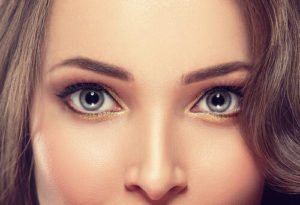There are so many people who are searching far and wide just to get their dream look. Some would try every beauty product that they can get a hold of from beauty bars and health and beauty sections of department stores, while some would be consistent visiting salons just to maintain or improve their beautiful selves. Those who are desperate to achieve their beauty goals would consider going under the knife, and that is not unusual these days. In fact, it is so common that you should know at least one person who has undergone at least one cosmetic surgery procedure in his or her lifetime. One of the most sought-after cosmetic surgery procedures in the world is rhinoplasty. Let us discover what rhinoplasty does, how it benefits the patient, and discover how safe is rhinoplasty surgery.
Rhinoplasty: The basics
Rhinoplasty, more commonly known as a nose job, is a medical procedure that alters the shape, size, and overall physical and functional look of your nose. This modification can be done by modifying the bone or the cartilage. This is one of the most common types of plastic surgery, the third in the world, which is used for both medical as well as cosmetic purposes.
How safe is rhinoplasty? Like any other medical procedure, the nose job surgery procedure has its own set of risks and potential complications that can affect the outcome of the surgery. There are also some misconceptions that we hear about rhinoplasty that we should debunk and understand further so that the whole procedure is clear to us from its step-by-step method to the overall outcome.
Rhinoplasty myths exposed and explained
Here are some statements that most patients claim about rhinoplasty that needs more explanation for clarity.
Rhinoplasty is for cosmetic enhancement only.
While getting a nose job may physically alter the size, shape, and height of your nose to accentuate your facial features, that is not the only use of this surgery. Doctors and surgeons alike would recommend getting a rhinoplasty if you are diagnosed with breathing problems that are associated with nasal structure defects. Children with congenital malformations like cleft lip and palate often are recommended to undergo rhinoplasty on top of other surgical procedures so that the function of the mouth and nose for digestion and respiration may be corrected. Moreover, patients diagnosed to have deviated septum or sleep apnea will benefit from getting a nose job surgery to remove or correct any obstruction.
You can copy the nose of celebrities through rhinoplasty.
Most patients when they visit their rhinoplasty surgeons would bring with them pictures of celebrities with an emphasis on how their noses look because they want these to show how their nose would look like after surgery. The truth is, if the doctor is respectable and reliable, he will not give in to your request and would instead show you how your nose should look like the way it is proportioned to your face.
You only need one good nose job.
Ideally, rhinoplasty results should last you a lifetime and they are permanent. Unfortunately, most surgical outcomes may only be finalised if additional surgery is performed. A single nose job surgery may be a start or an effective answer to a minor nasal structure issue. But if your condition needs extensive work or complications arise after the surgery, be prepared that your surgeon would only allow your surgical wounds to heal and then recommend that you undergo another nose job surgery to complete the look.
You can die from rhinoplasty.
Now, this is a very morbid way to look at it. Let’s be honest, no surgery is exempted from risks and complications. Now, for rhinoplasty, there may be serious complications that may happen, like difficulty breathing, excessive bleeding, anaesthesia reactions, pain that may endanger one patient’s life. However, an expert surgeon would have made all the necessary safety precautions during and after the surgery to make sure that you are in good condition and away from any life-threatening complications.
Rhinoplasty is covered by insurance.
The answer to this may depend on the reason you had your nose job in the first place. If your reason is purely aesthetic in nature, then your insurance policy won’t cover it. But if your doctor or surgeon recommended this surgery to correct or address any medical condition related to your nasal structure, then your medical insurance may help you cover the expenses of your rhinoplasty.
How safe is rhinoplasty: The determining factors
As mentioned earlier, no surgery is exempted from the risks and complications before, during, and after the operation. There are so many variables that needed to be controlled that a single mishap can affect the outcome of the operation. Here are some of the most common aspects of your rhinoplasty surgery that can affect the overall outcome and safety of nose job surgery.
 The experience of the surgeon: The experience and expertise of a surgeon will determine how safe a rhinoplasty will be. A skilled and highly-qualified surgeon will be well aware of the difficulty and limitations of the procedure. He or she will take the necessary steps to make sure that your requirements are well-matched and are within the limits of the procedure. At the same time, your surgeon will provide you with the required psychological counselling that will help you if ever you are having some lapses. Your surgeon will also be knowledgeable of the steps to be taken if any medical emergency arises during or after the procedure, whether it is expected or unexpected side effects. From all these factors given above, it is crucial that you get an expert rhinoplasty surgeon to take on your surgery so that you know you are in good hands all throughout the procedure.
The experience of the surgeon: The experience and expertise of a surgeon will determine how safe a rhinoplasty will be. A skilled and highly-qualified surgeon will be well aware of the difficulty and limitations of the procedure. He or she will take the necessary steps to make sure that your requirements are well-matched and are within the limits of the procedure. At the same time, your surgeon will provide you with the required psychological counselling that will help you if ever you are having some lapses. Your surgeon will also be knowledgeable of the steps to be taken if any medical emergency arises during or after the procedure, whether it is expected or unexpected side effects. From all these factors given above, it is crucial that you get an expert rhinoplasty surgeon to take on your surgery so that you know you are in good hands all throughout the procedure.
Type of procedure you are opting for: The rhinoplasty procedure comes under two categories, namely the open technique and closed technique. Each of these types of nose job methods come with different risks and safety requirements. The closed rhinoplasty is a standard procedure that makes incisions within the nose. This procedure does not leave any external scars and has a shorter healing period. An open surgery, on the other hand, involves making incisions across the lower or mid nose below your nostrils, an area called the columella. This provides an easy exposure to your cartilage or bone structure that makes up your nose but will leave a scar post-surgery.
Your medical profile: Your medical profile will play an important role when it comes to determining the risks involved in the rhinoplasty. If you have previous medical conditions such as diabetes or a blood-clotting disorder, it can increase the risks of a procedure. You will need to consult your surgeon before you undergo this process to see if you are a good candidate for the procedure.
No matter what your final goal is in regard to having your nose fixed surgically, maintaining your overall health and safety should be a top priority for you and your surgeon. Most rhinoplasty procedures may be problem-free, yet patients should be aware of the potential side effects and risks of rhinoplasty, as well as their personal risk factors. Discuss with your doctor all your concerns so he can explain and lead your thoughts and expectations in the correct way of how to view rhinoplasty and its safety.



Recent Comments